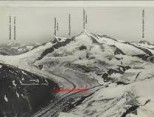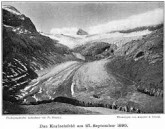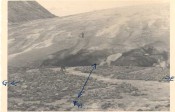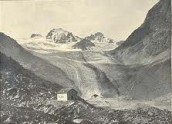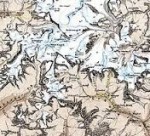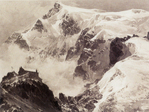Selected ongoing projects
... at the IGF/ÖAW and Verein Gletscher-Klima
Euregio RockME 2022-2024
Geochemical response of Alpine Rock Glaciers to global warming: hydroecological consequences of trace element Export. Running title: Response of rock glaciers to global warming
Lead: Free University of Bozen-Bolzano, Faculty of Science and Technology, Bozen-Bolzano (UNIBZ), Project partner:
Fondazione Edmund Mach, Research and Innovation Centre, San Michele all’Adige (FEM)
FWF P 34399 - N (C)old.Ice- Insights into late Holocene Alpine climate (2021-2024)
This projects contributes to global efforts by providing new climate information unraveled from ice cores in the Eastern Alps. Here we observe one of the most extensive deglaciation processes on the globe. Together with the large volume of glaciological, climatological and geochronological data, we can significantly improve our past mass balance chronology.
In recent projects, we drilled the first ice core in the Austrian Eastern Alps to the ground at Weißseespitze, 3500 m asl, found out that the lowest ice roughly corresponds to Ötzi the ice man’s period, and identified a significant interruption in the otherwise stratigraphic structure of the core by a first rough analysis of stable isotopes. In comparison with other radiometric datings, the onset of glaciation seems to be quasilinear with elevation, which could mean either that i) local accumulation is altered similarly by wind erosion across the Alps, or that ii) precipitation patterns changed in the past - which could be related to a general switch in North Hemispheric circulation.
We propose to drill ice cores from a site at the same elevation as Weißseespitze, but with different precipitation (Sonklarspitze, 3463 m asl), and fill elevation gaps in the Alpine records with cores at Großvenediger (3666 m asl) and Jamtalferner (3099 m asl). The cores will be complemented by two samples from basal ice layers/ground from two disappearing glaciers.
Ice cores will be analyzed to obtain quasi-continuous datasets of insoluble particle content and size distribution, stable water isotopes, major ions and trace elements. To be able to compare past and present conditions at the site, the present glaciological parameters are also recorded. Palynological dating, which potentially allows the analysis of past mass balances to an accuracy of individual years, is done for the Weißseespitze core, as close to the site where other pollen records in different matrices are available for comparison, as well as data from a pollen trap.
Gletschermonitoring Venedigerkees (2012-)
Das Obersulzbachkees auf der Nordseite des Großvenedigers in der Kernzone des Nationalparks Hohe Tauern ist in mehrere kleine Teilgletscher zerfallen. An Stelle der ehemaligen Türkischen Zeltstatdt befindet sich ein See. In Zusammenarbeit mit dem Hydrographischen Dienst des Amtes der Salzburger Landesregierung und mit Heinz Slupetzky von der Universität Salzburg wurde 2012 ein Monitoring System zur Erfassung des Gletscherrückgangs eingerichtet.
Massenbilanzmessungen Hallstätter Gletscher (2006-)
Der Hallstätter Gletscher am Hohen Dachstein hieß vormals Karls-Eisfeld und wurde bereits von Prof. Simony untersucht. Die Messungen der Massenbilanz werden derzeit zusammen mit der Firma Bluesky durchgeführt und vom Hydrographischen Dienst des Landes OÖ und der Energie AG finanziert.
Massenbilanzmessungen Mullwitzkees (2006-)
Das Mullwitzkees liegt in der Kernzone des Nationalparks Hohe Tauern südlich des Großvenedigers. Das Monitoring der Massenbilanz wird vom Nationalpark Hohe Tauern und dem Hydrographischen Dienst der Abteilung Wasserwirtschaft des Amtes der Tiroler Landesregierung durchgeführt.
Massenbilanzmessungen Jamtalferner (2013-)
Die Massenbilanzmessungen am Jamtalferner in der Silvretta sind die westlichsten derartigen Messungen in Österreich. Sie werden seit dem Haushaltsjahr 1988/89 durchgeführt. Seit 2013 werden diese Messungen vom Verein-Gletscher Klima im Auftrag des Hydrographischen Dienstes des Amtes der Tiroler Landesregierung durchgeführt.
Selected finished projects
FWF ColdIce (2016-2019): A novel approach to glacier extent
The overarching project aim is to research minimal glacier extent of summit glaciers during the Holocene period. To this end, cold base summit glaciers will be identified to be studied for their geometry, englacial temperatures, as well as for their surface mass and energy balance. The glacier stratigraphy and ice build-up process is investigated based on analysis of water isotopes, chemical and physical properties, along with radiometric dating methods. Key research questions are: i) what are the maximum age constraints of cold base ice at the highest elevations? ii) what are energy flows from and to the present day cold ice bodies at their interfaces withthe atmosphere and with possibly frozen bedrock?
3PClim (2012-2016)
Im Interreg Projekt 3P Clim werden Klimakarten der Regionen Nordtirol, Südtirol und Belluno erstellt. Diese Klimatologie wird durch Informationen zu den Gletscherständen seit dem Hochstand der kleinen Eiszeit ergänzt. Projektpartner sind die ZAMG, das Hydrographische Amt Bozen und das ARPA Veneto.
Drittes Österreichisches Gletscherinventar (2007-2014)
Auf Basis der LiDAR Befliegungen der Bundesländer wird derzeit das Österreichische Gletscherinventar aktualisiert, die Fertigstellung ist für 2014 vorgesehen. Die Flächen des LIA Maximums von Groß und Patzelt werden an die Moränen des LiDAR Inventars angepasst und sind dann auch digital verfügbar.
Gletschergeschichte (2015-2016)
Historische Dokumente, Gemälde und Bilder vermitteln einen einzigartigen Eindruck der Veränderung der Alpengletscher in den letzten Jahrhunderten. In diesem Pilotprojekt werden sowohl einzelne Gebiete von Glaziologen und Historikern bearbeitet, als auch neue Auswertemethoden angedacht um die bisher ruhenden Schätze für die moderne Glaziologie zu nutzen.
